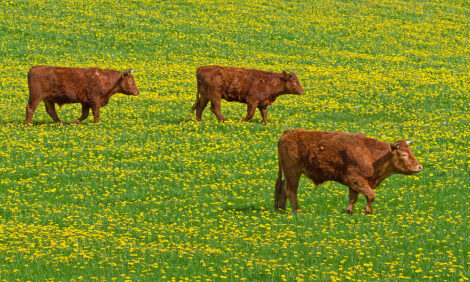



Irelands Water Footprint for Livestock Sustainable
US - According to the United Nations, seventy per cent of fresh water is used for agriculture globally with industry using 22 per cent and domestic use accounting for less than ten per cent. The UN also estimates that in less than 15 years time two-thirds of the world population could be living under water stress conditions. Simply put that means there will not be enough water for all uses in these regions, writes Jim O’Toole, Meat Division Manager, Bord Bia – Irish Food Board.Meat and dairy products can be characterised as being big water consumers but some analyses ignore the critical questions from a sustainability perspective; how much abstracted water is required and what impact does that have on the environment where it is produced?
Bord Bia has been conducting research with Cranfield University examining water consumption for dairy and beef production systems in Ireland. Water was divided into two categories: Green and Blue (see chart). The former is the rain that is used by plants where they grow while the latter is the water that is abstracted from rivers, groundwater or mains supplies.
Abundant rainfall in Ireland means that water stress is not an issue whereas currently in England, for example, there has been drought pressure in some regions throughout the winter. Irish rainfall volumes are also responsible for the high productivity of our grassland.
The study concludes that for both beef and dairy less than two per cent of the total water consumption is (abstracted) blue water. Combining the blue water use with a water stress index can give a ‘normalised’ water footprint. Such a footprint for Irish beef and dairy compares very favourably with other countries.
TheCattleSite News Desk


